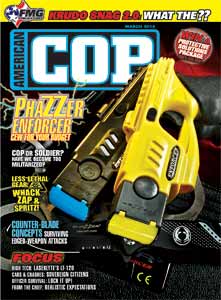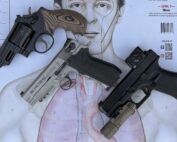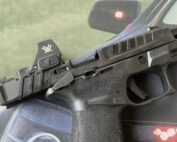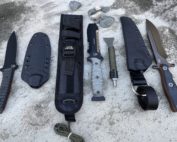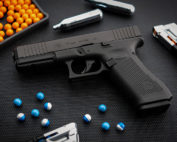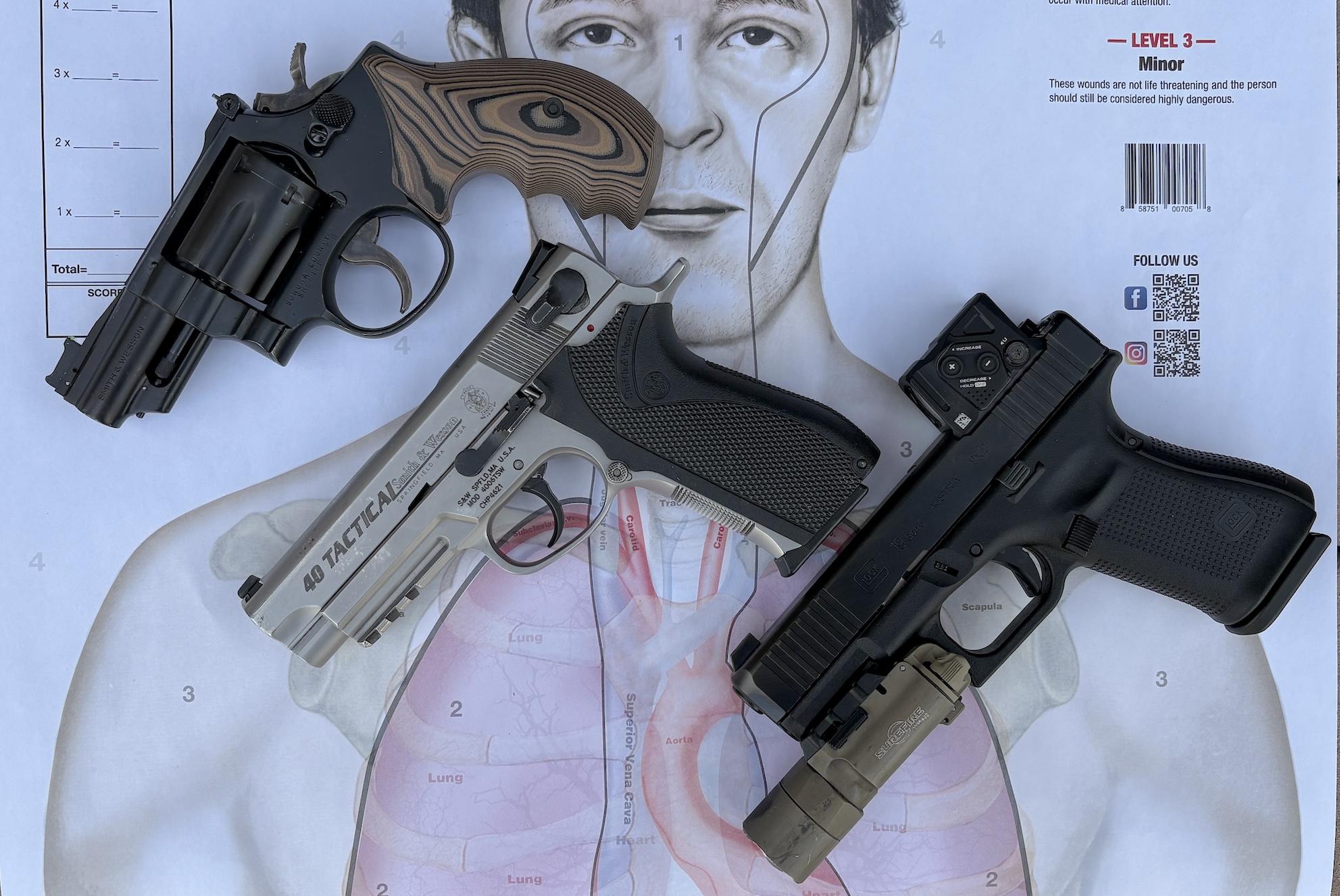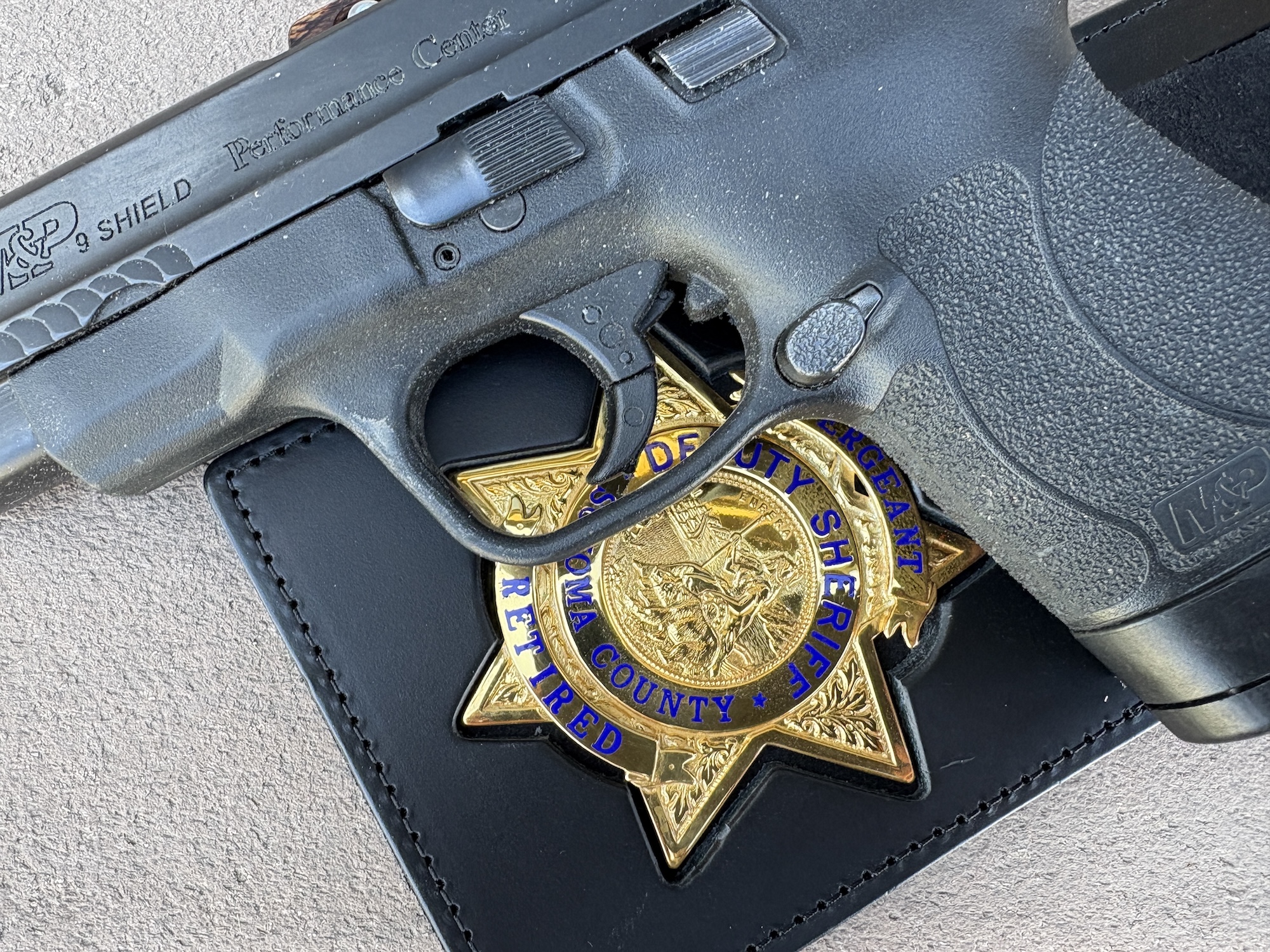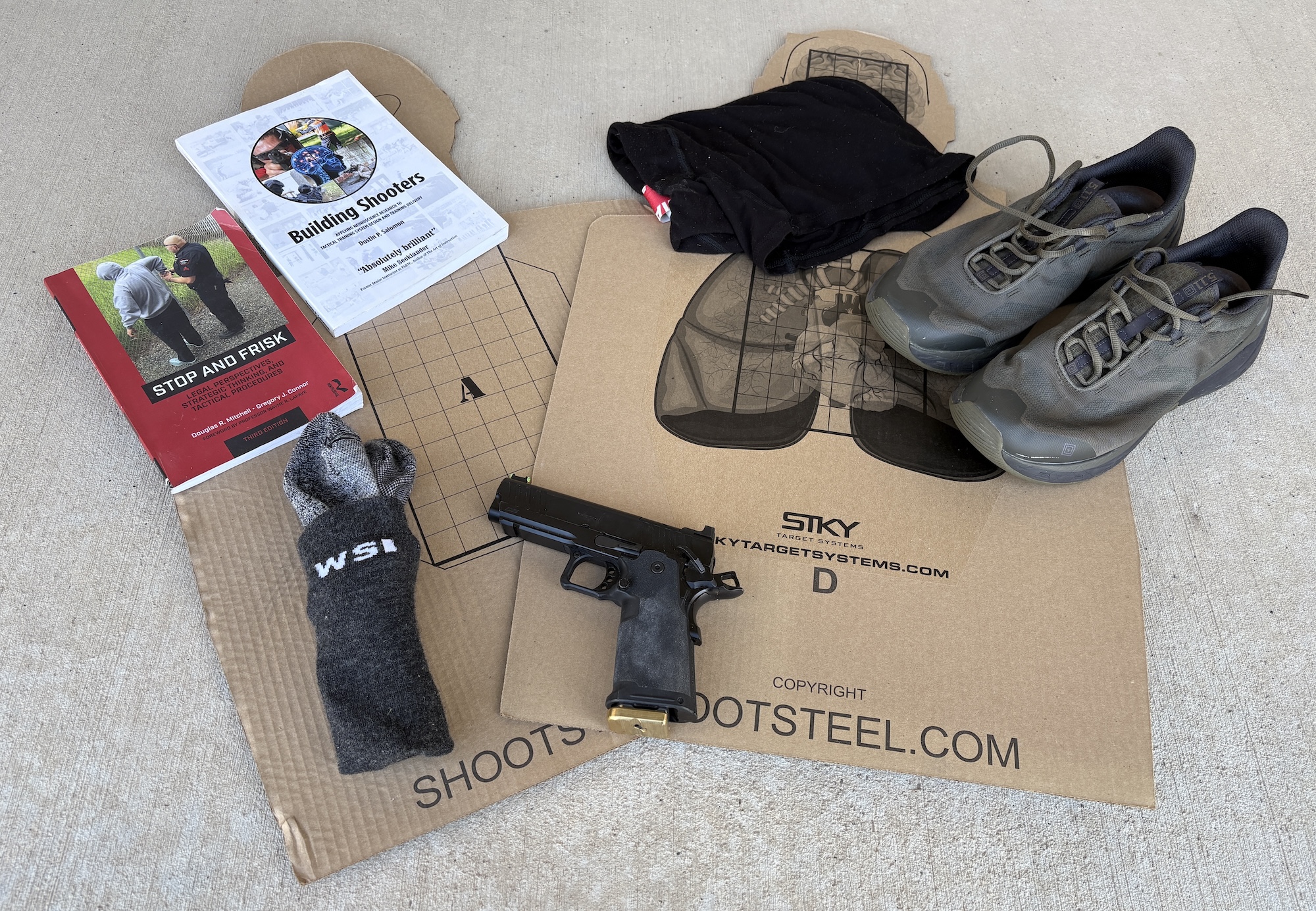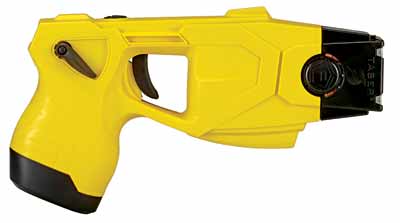
LETHAL-5
Several decades ago, interest grew in “non-lethal” weapons to control combative or emotionally disturbed subjects in situations where deadly force was not justified. Hard experience soon showed there’s no such thing as “non-lethal.” Because every weapon known to man has a potential to be lethal, the term “less lethal” came into use. Without getting into the semantics of the term, let’s just say it’s understood even less-lethal weapons can be lethal in some situations. Experience shows it is just as important to train officers in the proper use of these weapons as it is to refine the technology.
A perfect example is the use of the baton. Blows to the head and neck are potentially lethal, and modern training programs emphasize blows to the large muscles, elbows and knees, which are designed to be incapacitating but not lethal.
There are roughly three categories of less-lethal weapons today: kinetic (to whack ‘em), electrical (to zap ‘em) and chemical (to spritz ‘em).
Overall, there’s no perfect 100 percent effective less-lethal weapon, despite advertising claims. There are some pretty good ones though, and their effectiveness often depends more on the quality of training than on technology.
Monadnock AutoLock II: This is a 3-section expandable steel baton using a ring of ball bearings to lock each of the telescoping sections in place. A button located in a recess at the rear of the grip operates a cam to unlock the mechanism. The 23″ model actually measures 11.25″ collapsed, while weight is 25.5 ounces. The “rubber safety tip” at the end of the third section measures .875″ in diameter and is 1.75″ long. The Wedge End Cap at the base of the grip prevents the baton from rolling away if dropped.
Deploying the baton requires flicking it sharply or pulling the knob until the baton is fully extended. A foam sleeve on the handle allows a firm grip and cushions the officer’s hand from the impact. Packed with the baton is an instruction sheet describing the mechanism in detail, and instructing the user on maintenance and lubrication — something often ignored by too many cops!
Monadnock Control Device CD-21: The CD-21 is a lightweight version of the PR-24, a 2-stage expanding baton with a short handle with Trumbull Stop fastened to an aluminum frame. A striated rubber grip encloses the back of the frame. The extendable portion is made of reinforced epoxy and uses a pin and spring mechanism to lock it in the forward position.
Unlike conventional taper-lock mechanisms, this baton doesn’t require a sharp rap against a hard surface to retract, but just a firm push on the spring-loaded pin. Measured closed length is 12.875″ and expended length is 21.125″; it weighs 18 ounces. While the original PR-24 is for uniformed use, this lightened and shortened version is better suited for plainclothes’ use.
Monadnock Ultralite 21 with Wedge End Cap: This is a friction-lock baton with a carbon fiber composite handle, measuring 8.25″ collapsed and 21.25″ extended. Weight is a feathery 11 ounces. The extendable shafts are black-chrome finished steel and the knob is a black hard-anodized finish.
Compact enough for plainclothes’ use, it’s light and handy in the draw, but collapsing the baton requires a sharp rap against a hard surface. The Wedge End Cap facilitates drawing and helps retain a grip on the baton.
ASP Talon Batons: These are mechanical-lock batons, available in steel or lightweight aluminum, and in deployed lengths of 16″, 21″ and 26″. Measuring the 21″ baton however, showed the actual deployed length is a fraction under 20″. The aluminum version, the Talon Air, weighs 12 ounces, and the steel version weighs 18.5 ounces. Testing showed both operated smoothly with positive lockup, and easy retraction by pressing on the large button at the rear of the grip. The ASP button is larger and easier to push than some other makes.
A nice touch is the foam vinyl grip, reducing the impact on the officer’s hand. It also assures the baton won’t slip if wet. Another nice touch is the packaging, which includes a short course in the care and use of the baton.
The locking system is ingenious, with two opposing spring-loaded discs expanding into grooves machined inside the sections. This system allows a choice of flicking the baton to expand it, or easing the sections out into place for quiet deployment. A release button at the base pushes a rod retracting each set of discs to collapse the baton.
TASER X26: The X26 is in the shape of a pistol, and uses compressed nitrogen to propel a pair of darts at ranges up to 35′. The body is high-impact polymer, available in black, yellow and clear, and the TASER’s operating temperature range is from -4F to 122F. TASER estimates the device’s useful life at up to 5 years.
Some of the features are 60 percent smaller in size and weight than the Advanced TASER M26, optimized for full-time belt carry, upgradeable software, an integrated laser sight with low-intensity lights and a central information display showing a countdown timer during an activation, and battery level.
The TASER uses replaceable cartridges compatible with several models, containing the nitrogen propulsion system, insulated wires, probes and AFID serialization. A USB dataport records time and date of each use, as well as length of application and battery status. Power comes from a Digital Power Magazine, or battery pack, using lithium batteries. The DPM tracks power usage and remaining power and allows software updates to be included with each new battery.
Other models include the X26P and X2, which offer upgrade features, some of which are a camera, dual lasers, backup shot and self-diagnostics.
Fox Labs, International: Fox Labs produces a variety of law enforcement equipment, but here we’ll discuss only chemical less-lethal weapons. Several things distinguish Fox Labs products from others in the field.
One is the “Full Safety Holster” available in leather or nylon. This is a clever design intended to defeat “snatching,” as the top flap snap opens in only one direction. Fox Labs designed enough clearance between the top flap and the canister to allow discharging while still in the holster. The holster is attached to the belt loop with Velcro. Releasing the bottom strap allows pulling the holster from its belt loop and discharging the OC toward the target.
The “Five Point Three” canister contained a 2 percent solution of OC rated at 5.3 million Scoville heat units. This discharges in a stream out to 19′ and will provide about 18, half-second bursts.
The “Serious Business” canister discharges a foam stream containing five percent OC rated at 2 million Scoville heat units. Fox Labs recommends this for close-in use to minimize contamination. Testing showed the foam reaches out to about 10′, and immediately falls to the ground, minimizing area contamination. There are about 16, half-second bursts before the can is empty. Both the “Serious Business” and “Five Point Three” contain an ultraviolet dye.
By Tony Lesce
For more info: www.americancop.com/index and click on the company name.
Order Your Printed Copy Of The American COP March 2014 Issue Today!
Download A PDF Of The American COP March 2014 Issue Now!


 (No Ratings Yet)
(No Ratings Yet)






